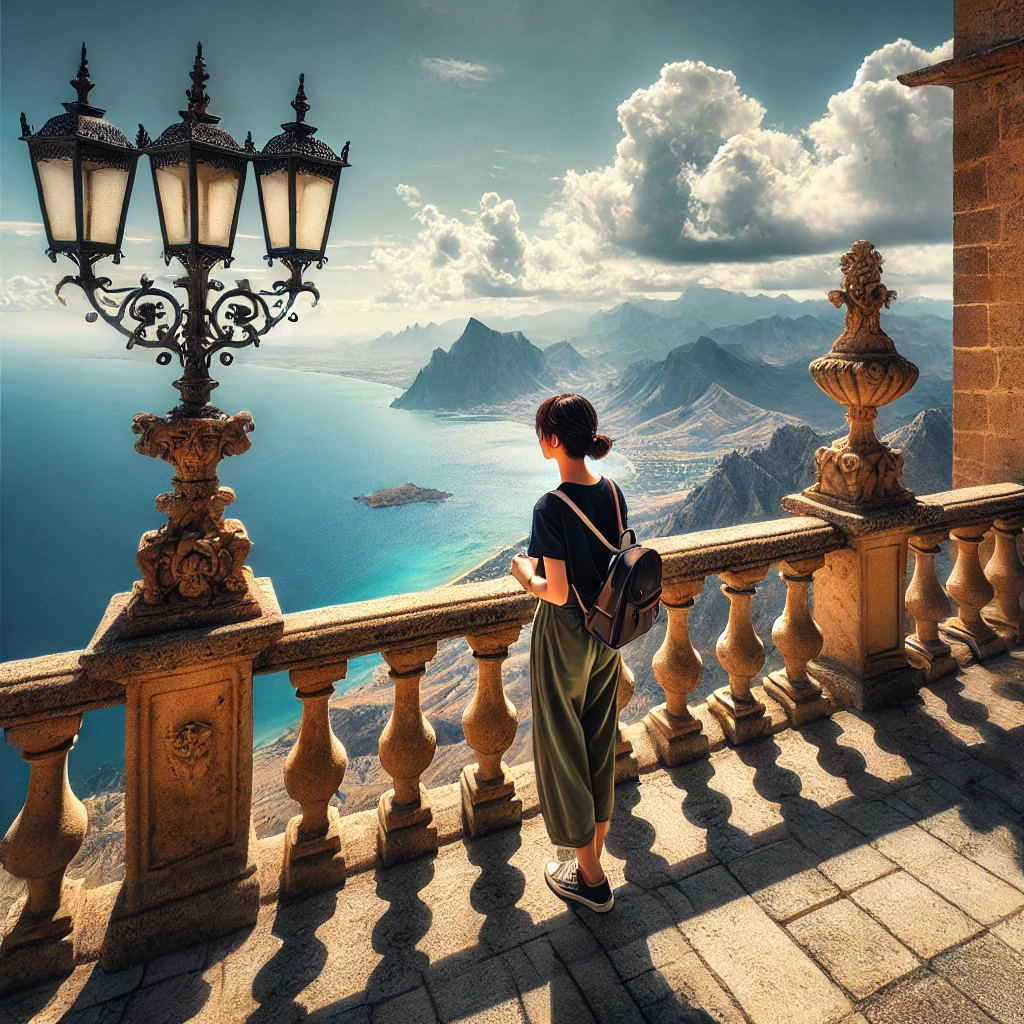ChatGPT:
Erice is a historic town perched atop Mount Erice, a towering hill that overlooks the city of Trapani in western Sicily, Italy. The town is renowned for its stunning panoramic views of the Mediterranean Sea and the surrounding countryside. With its origins dating back to ancient times, Erice has a rich history, blending various cultural influences from the Phoenicians, Greeks, Romans, and Normans.
Erice is famous for its traditional Sicilian pastries, particularly almond-based sweets and Genovese pastries, which are filled with custard or ricotta. The town’s culinary delights, combined with its historical charm and scenic beauty, make it a popular destination for visitors seeking a blend of culture, history, and natural beauty.
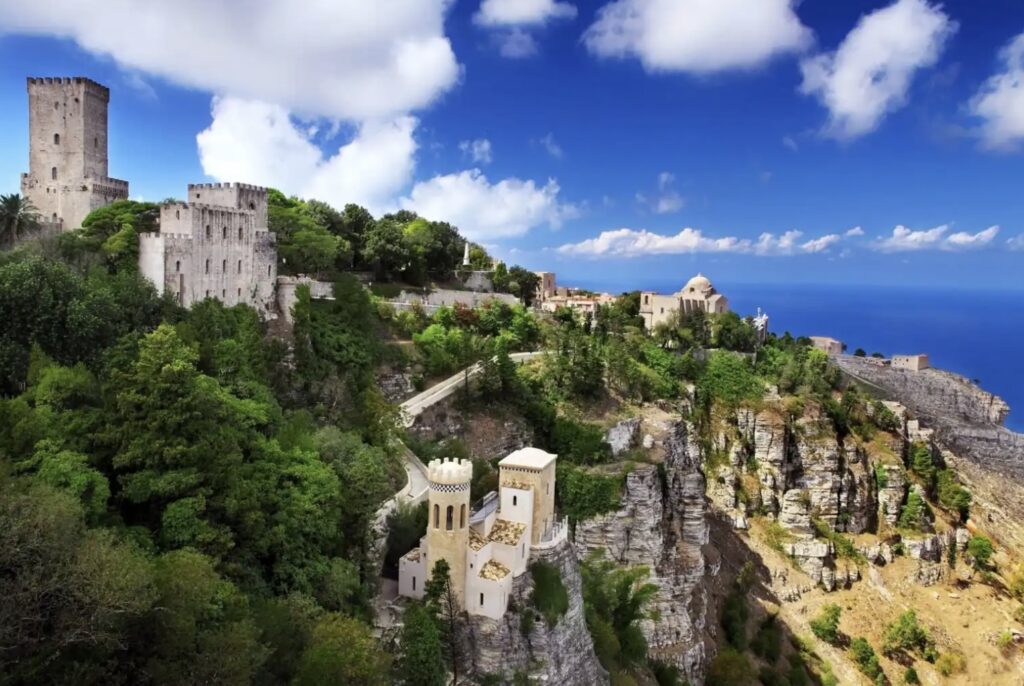
Erice, perched high on Mount Erice in western Sicily, has a history that stretches back thousands of years, marked by the influence of multiple civilizations that have left their imprint on the town’s culture, architecture, and identity.
Origins and Early History
Erice’s origins are steeped in mythology and ancient history. According to legend, the town was founded by the Trojan exile Eryx, from whom it takes its name. The area’s earliest known inhabitants were the Elymians, an ancient people of western Sicily, who established Erice as a significant religious center. The town was revered for its sanctuary dedicated to the goddess of love and fertility, known to the Phoenicians as Astarte, to the Greeks as Aphrodite, and to the Romans as Venus.
The temple of Venus in Erice became famous throughout the Mediterranean world. It was a significant place of pilgrimage and was renowned for its oracle and the practice of sacred prostitution, which was common in the ancient world as a form of devotion to the goddess. This temple’s reputation helped establish Erice as an important cultural and religious site in antiquity.
Greek and Carthaginian Influence
During the 6th century BCE, Erice came under the influence of the Greeks, particularly the settlers of nearby Segesta. However, its strategic location made it a coveted prize for other powers as well, particularly the Carthaginians, who controlled much of western Sicily during the early classical period. The town was involved in the struggles between the Greeks and Carthaginians, particularly during the Punic Wars.
Roman Period
Erice eventually came under Roman control in the 3rd century BCE following the First Punic War. The Romans continued to honor the sanctuary of Venus, which they associated with their goddess Venus Erycina. The town maintained its religious significance during Roman rule, and the temple remained a place of pilgrimage.
Medieval Era and Norman Conquest
After the fall of the Western Roman Empire, Erice, like much of Sicily, experienced a period of turmoil and change. The town was influenced by the Byzantines and later the Arabs, who conquered Sicily in the 9th century CE. During this period, the town’s strategic military significance was recognized, and it was fortified.
The Norman conquest of Sicily in the 11th century marked a new chapter in Erice’s history. The Normans, under Count Roger I, built the Castello di Venere (Castle of Venus) on the site of the ancient temple. This fortress served both as a military stronghold and a symbol of Norman power in Sicily. The town also saw the construction of several important churches during this period, reflecting its Christianization and religious importance under Norman rule.
Development and Modern Era
In the following centuries, Erice continued to develop as a fortified town. The medieval layout of narrow, winding streets, stone houses, and numerous churches that characterize Erice today largely dates back to this period. Despite its strategic importance in earlier centuries, the town’s influence waned as the larger cities of Sicily, such as Palermo and Trapani, grew in prominence.
In the 19th and 20th centuries, Erice became more of a cultural and historical site rather than a strategic one. The town’s medieval charm, combined with its spectacular views and historical significance, attracted scholars, writers, and tourists. The presence of the Ettore Majorana Foundation and Centre for Scientific Culture, established in the 1960s, has further boosted the town’s reputation as a center for intellectual and scientific exchange.
Erice Today
Today, Erice is a well-preserved medieval town that draws visitors from around the world. Its combination of ancient history, medieval architecture, and breathtaking natural scenery makes it a unique and captivating destination. The town’s cultural heritage is celebrated through its numerous festivals, religious ceremonies, and the continued production of traditional Sicilian sweets, maintaining a link between Erice’s past and present.
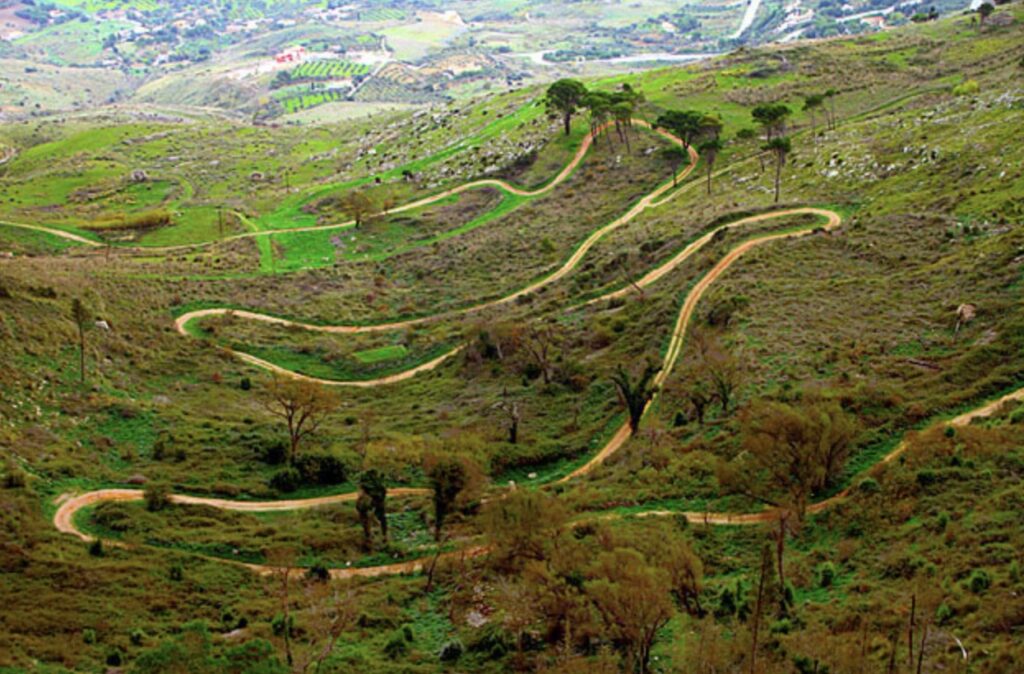
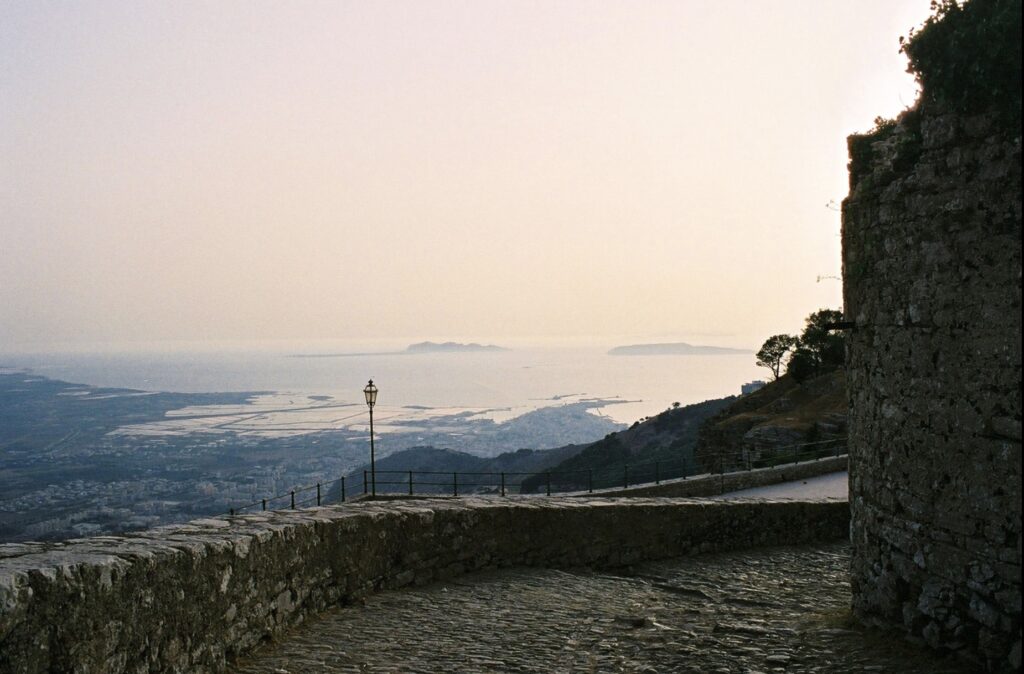
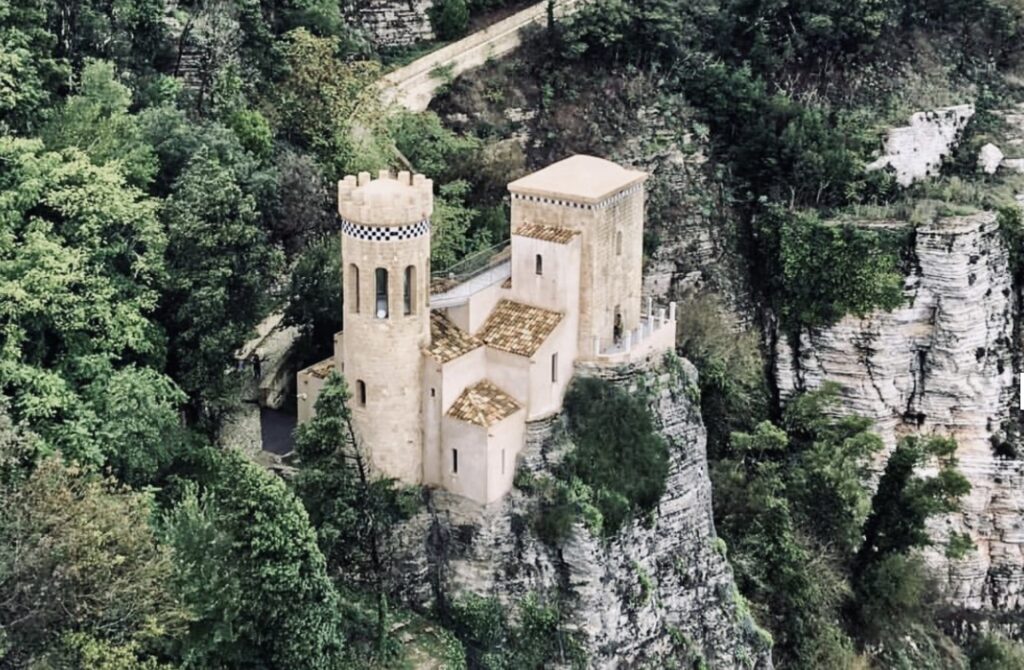
Erice is rich in historical monuments and tourist attractions, reflecting its long and varied history. Here are some of the key sites:
1. Castello di Venere (Venus Castle)
- Description: A Norman fortress built in the 12th century on the site of an ancient temple dedicated to Venus. The castle offers stunning views of the surrounding area, including the coast and the Egadi Islands.
- Significance: The castle is a symbol of Erice’s historical significance and its connections to ancient mythology.
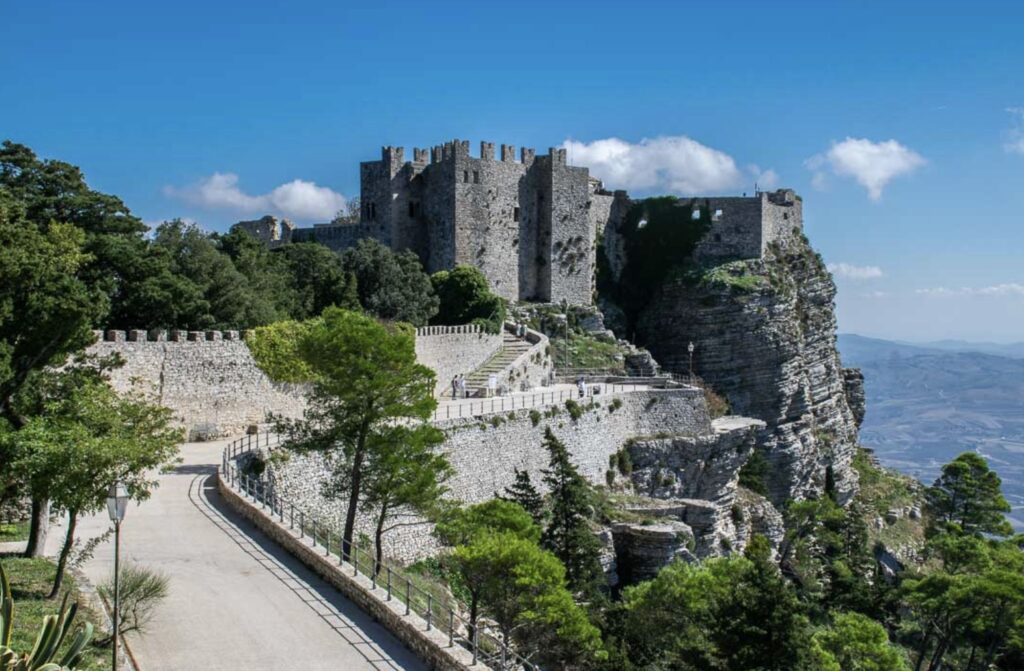
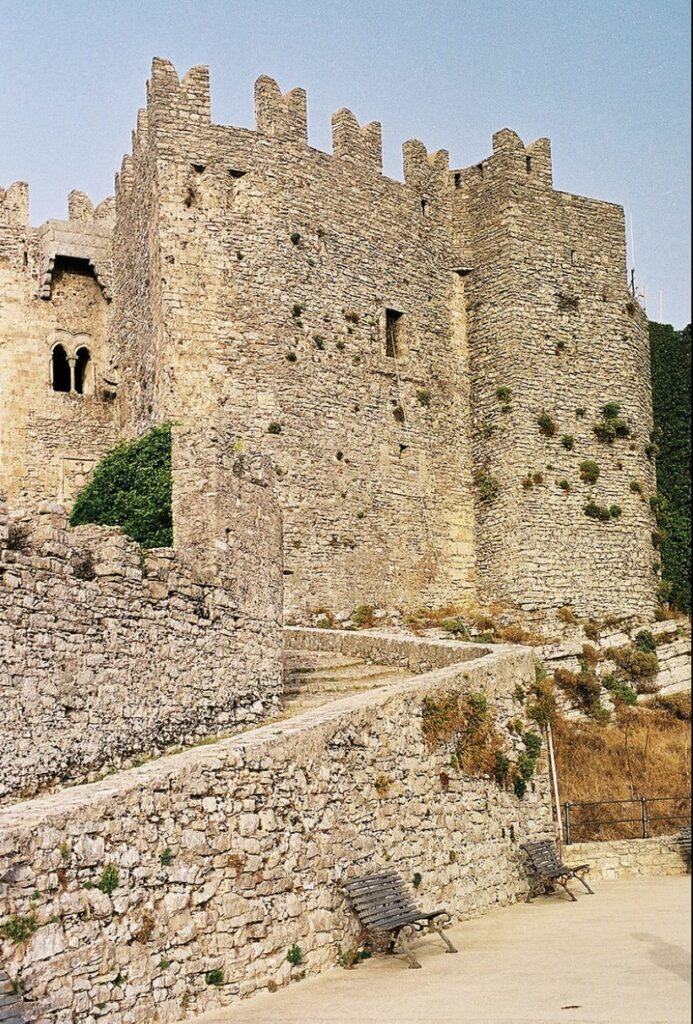
2. Torretta Pepoli
- Description: A small tower located near the Venus Castle, originally built in the 19th century by Count Agostino Pepoli. It was used as a place of meditation and study.
- Significance: The tower is known for its picturesque location and the panoramic views it provides.
3. Chiesa Madre (Mother Church)
- Description: Also known as the Cathedral of Erice, this church was constructed in the 14th century by King Frederick III of Aragon. The church features a Gothic-style architecture with a beautiful rose window and a bell tower that was originally a watchtower.
- Significance: The Chiesa Madre is one of Erice’s most important religious buildings, reflecting the town’s medieval past.
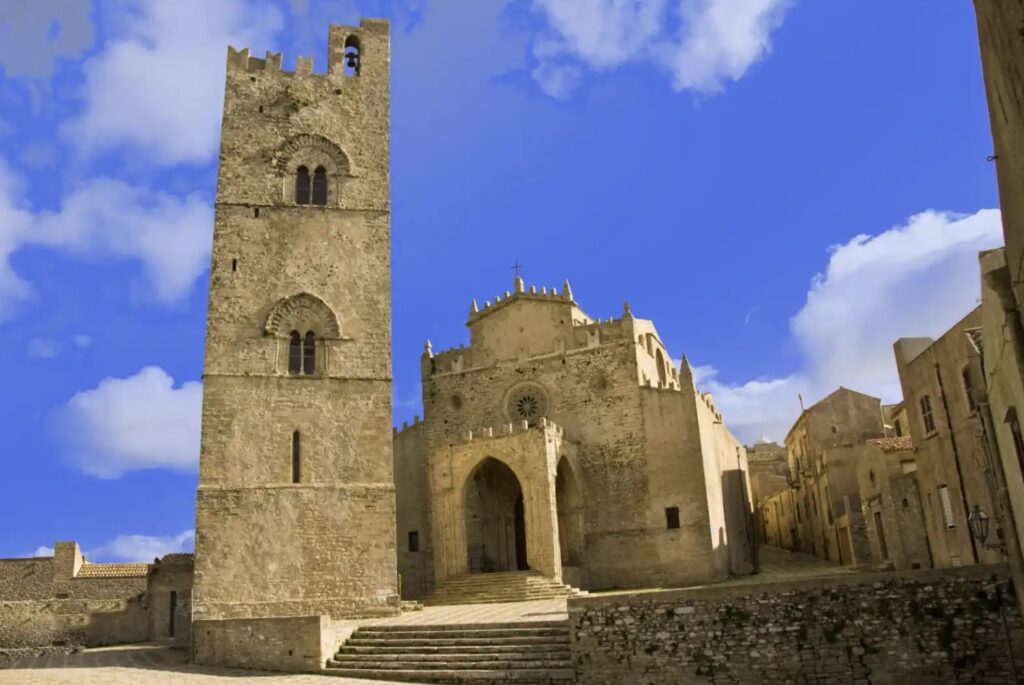
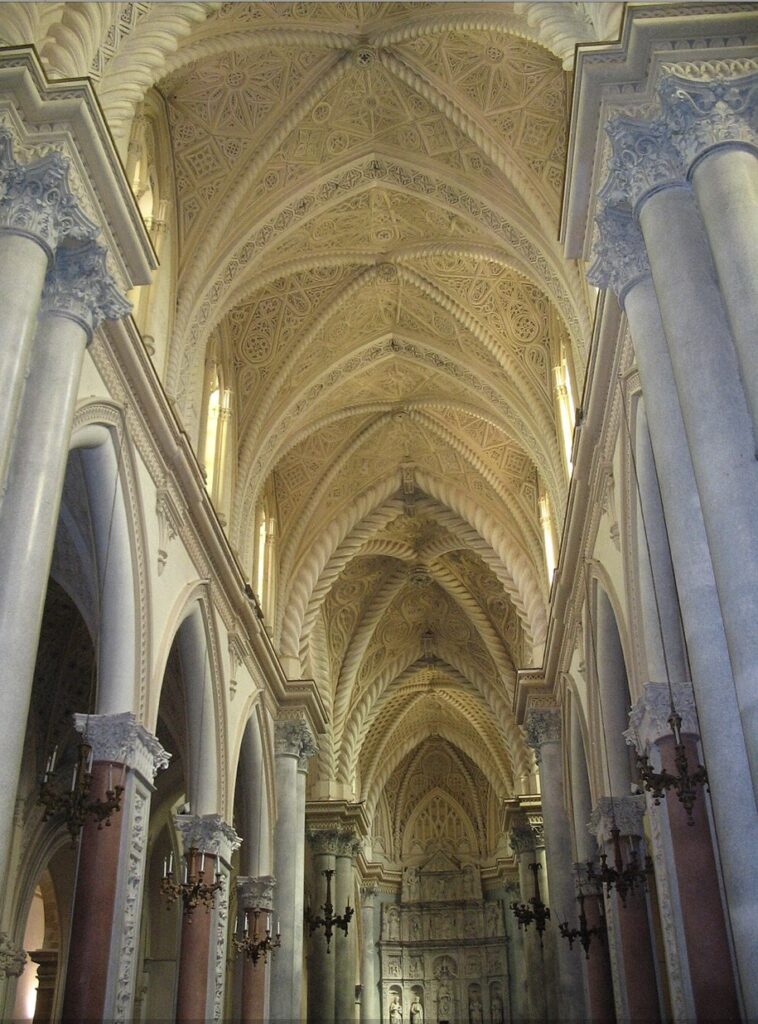
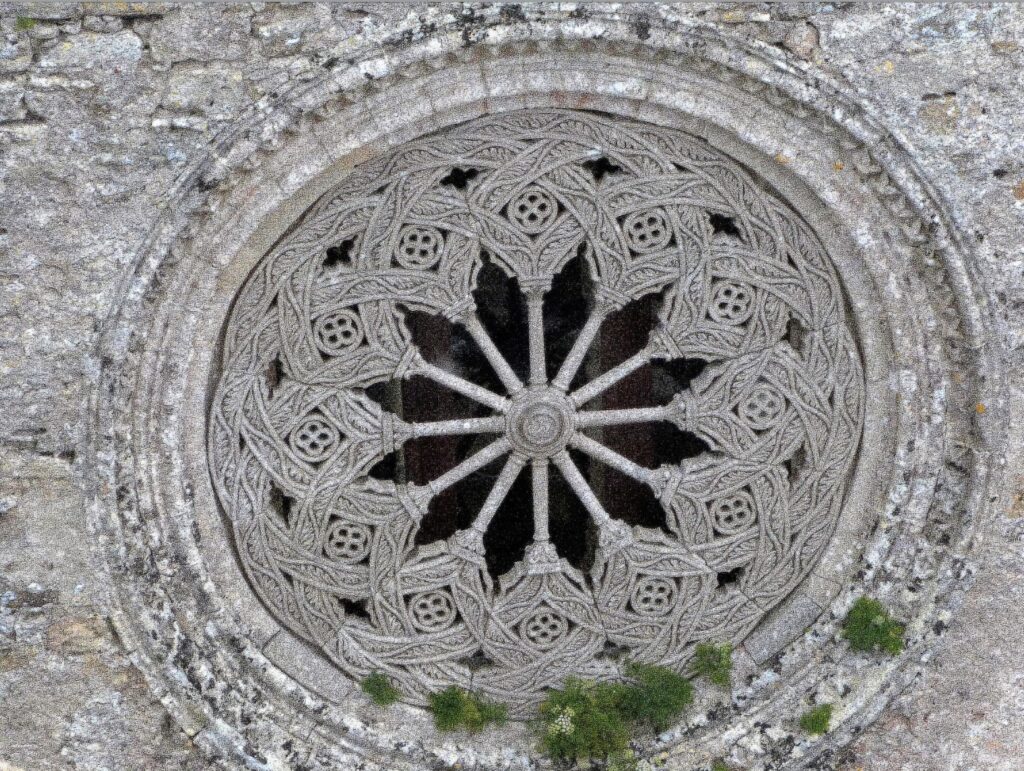
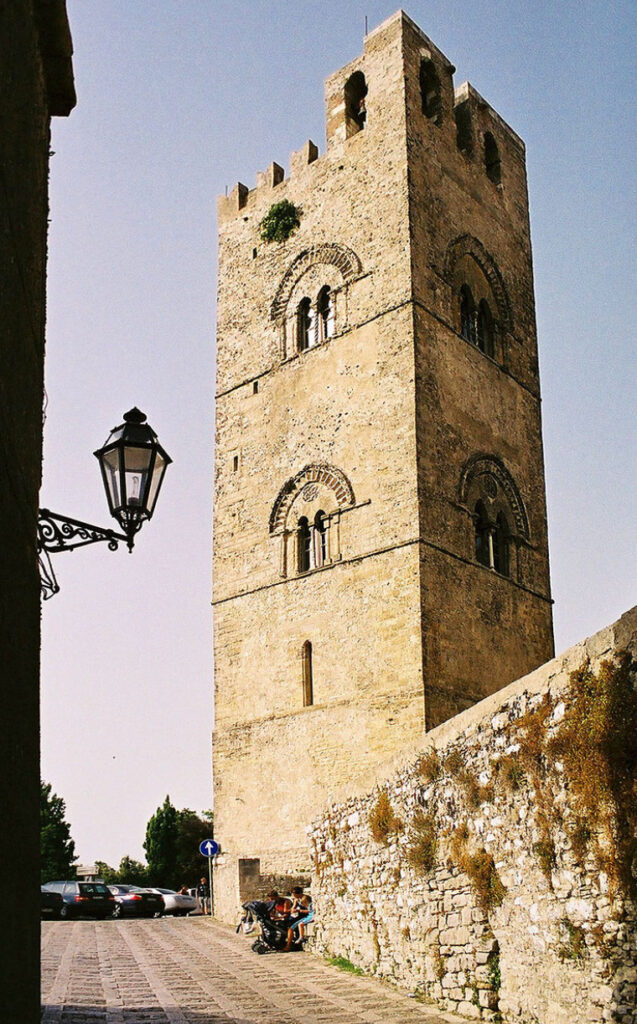
4. Church of San Giuliano
- Description: One of the oldest churches in Erice, believed to have been founded by the Normans in the 11th century. The church has been restored multiple times, and its current appearance dates to the 17th century.
- Significance: The church is dedicated to Saint Julian, the patron saint of Erice, and it is an important site for local religious traditions.
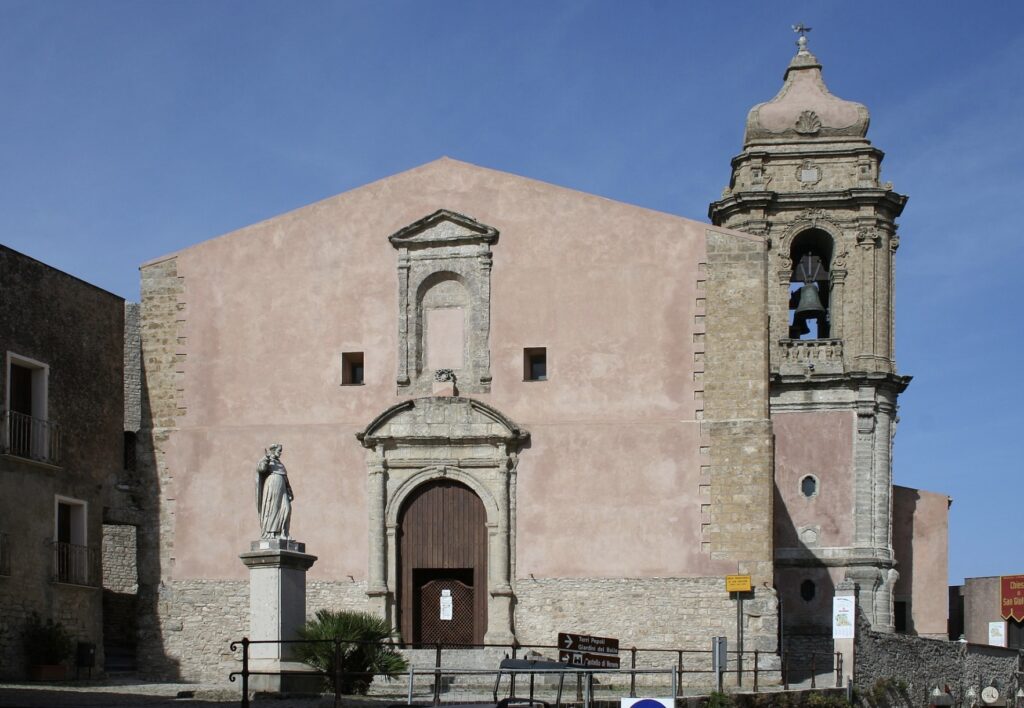
5. Balio Gardens
- Description: These beautiful public gardens surround the Venus Castle and are filled with Mediterranean plants, ancient trees, and statues. The gardens offer tranquil walks and stunning views of the landscape below.
- Significance: The gardens are a peaceful retreat, providing a contrast to the historic buildings of Erice.
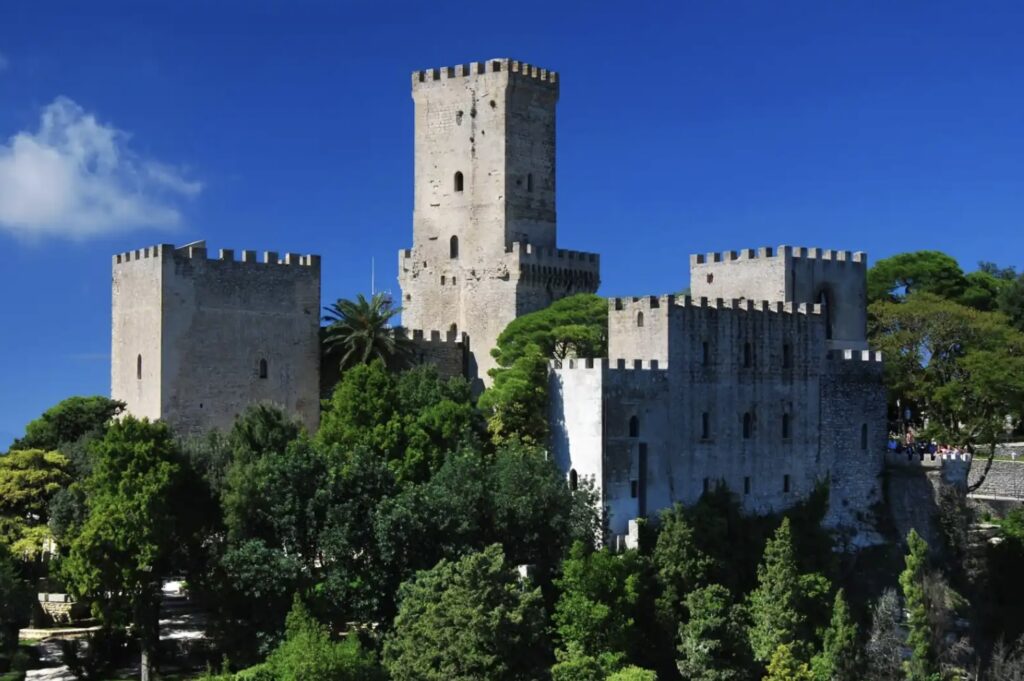
6. Church of San Martin
- Description: Another of Erice’s historic churches, San Martino was built in the 13th century and is known for its beautiful interior, including frescoes and Baroque decorations.
- Significance: The church adds to the rich religious and architectural heritage of Erice.
7. Ettore Majorana Foundation and Centre for Scientific Culture
- Description: Established in the 1960s, this center hosts international scientific conferences and seminars. It is housed in a series of historic buildings within Erice.
- Significance: The center is an important cultural institution, linking Erice to contemporary scientific research and intellectual exchange.
8. Erice’s Medieval Streets and Stone Houses
- Description: The town itself is a living museum, with narrow, winding cobblestone streets lined with well-preserved medieval stone houses. Walking through the town feels like stepping back in time.
- Significance: The streets and houses are a key part of Erice’s charm, offering a glimpse into the town’s medieval past.
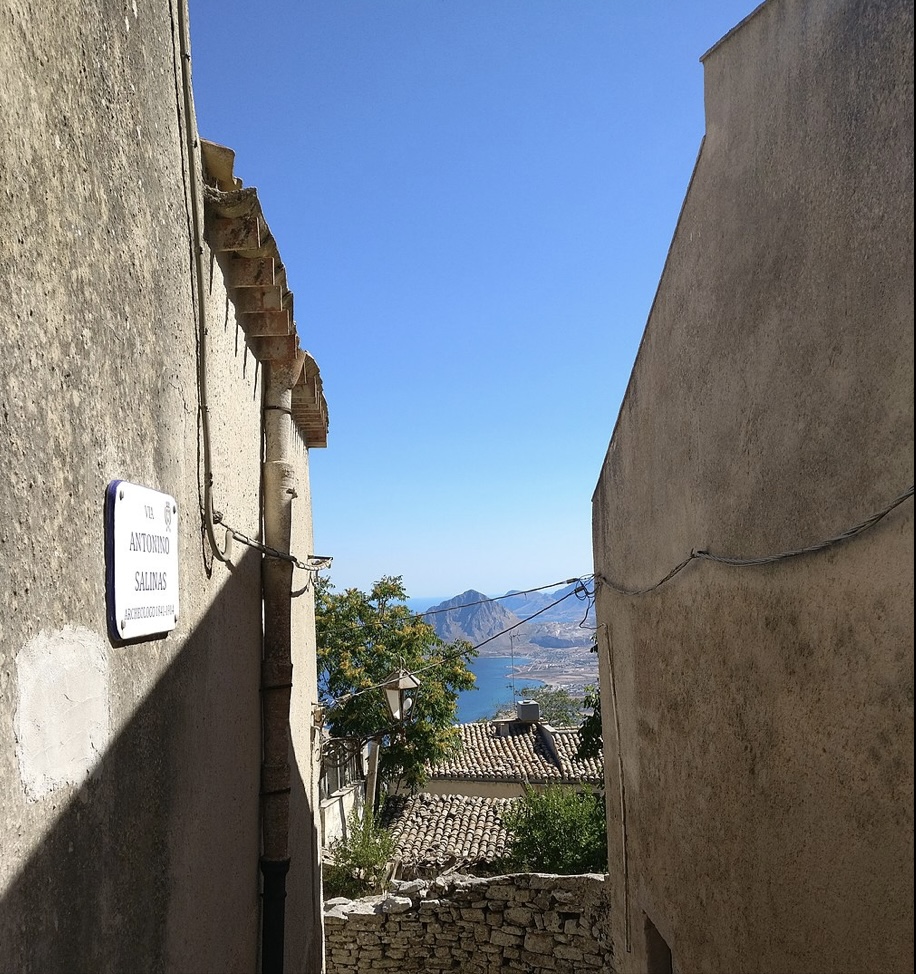
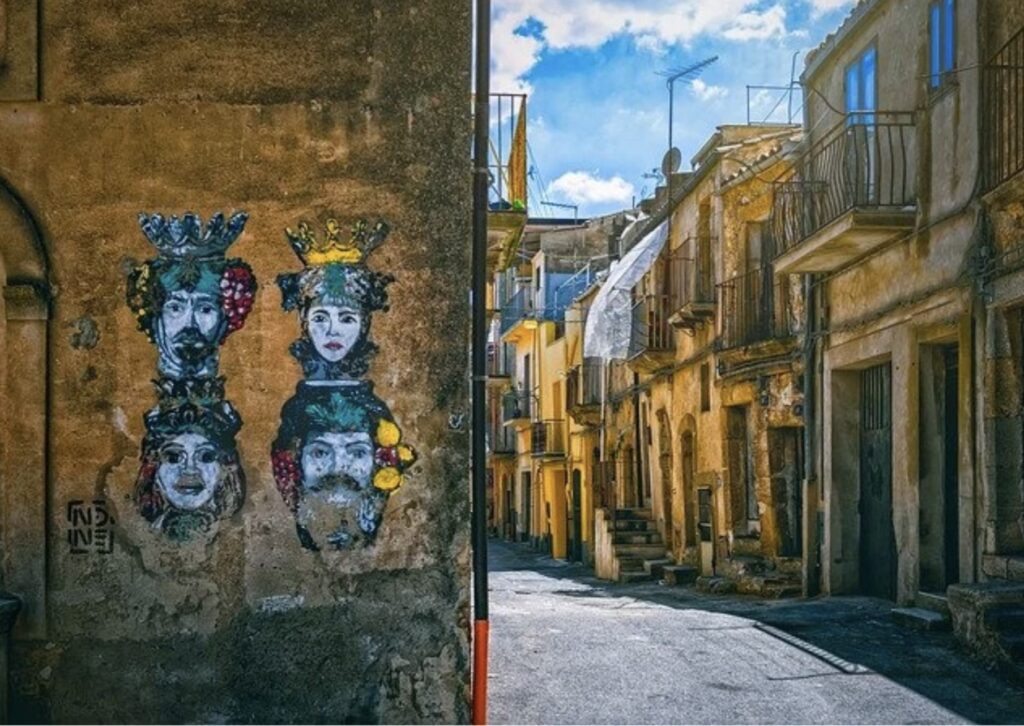
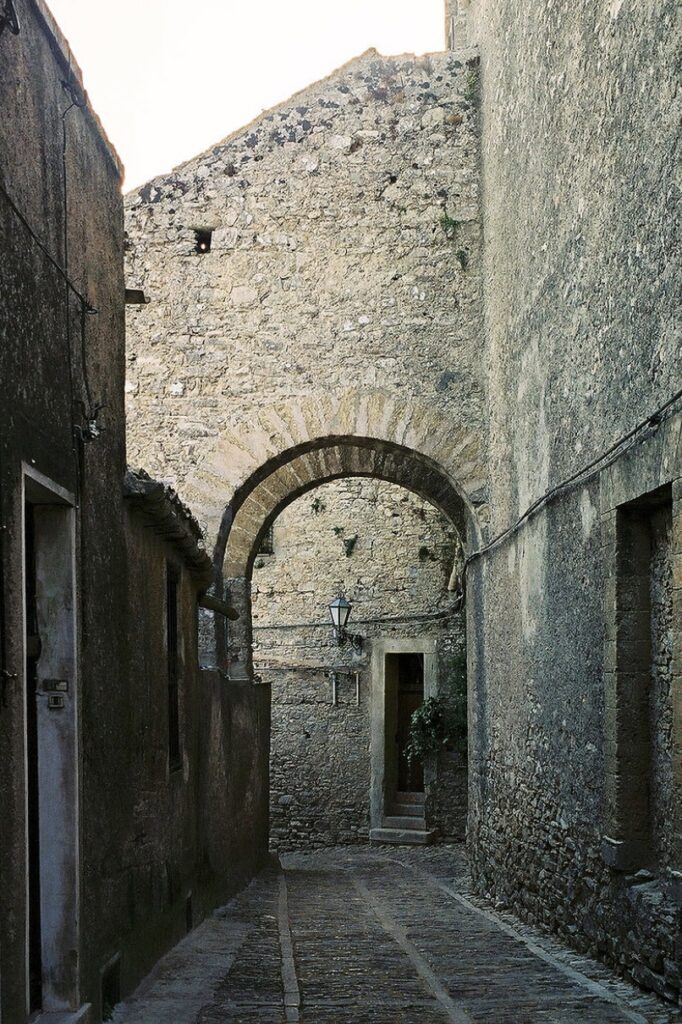
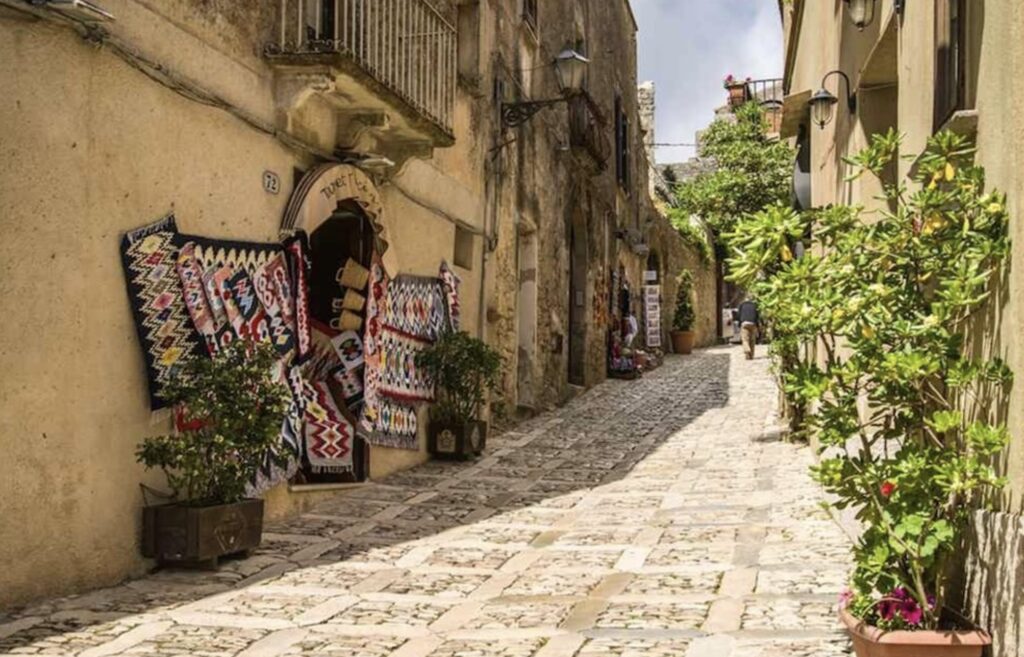
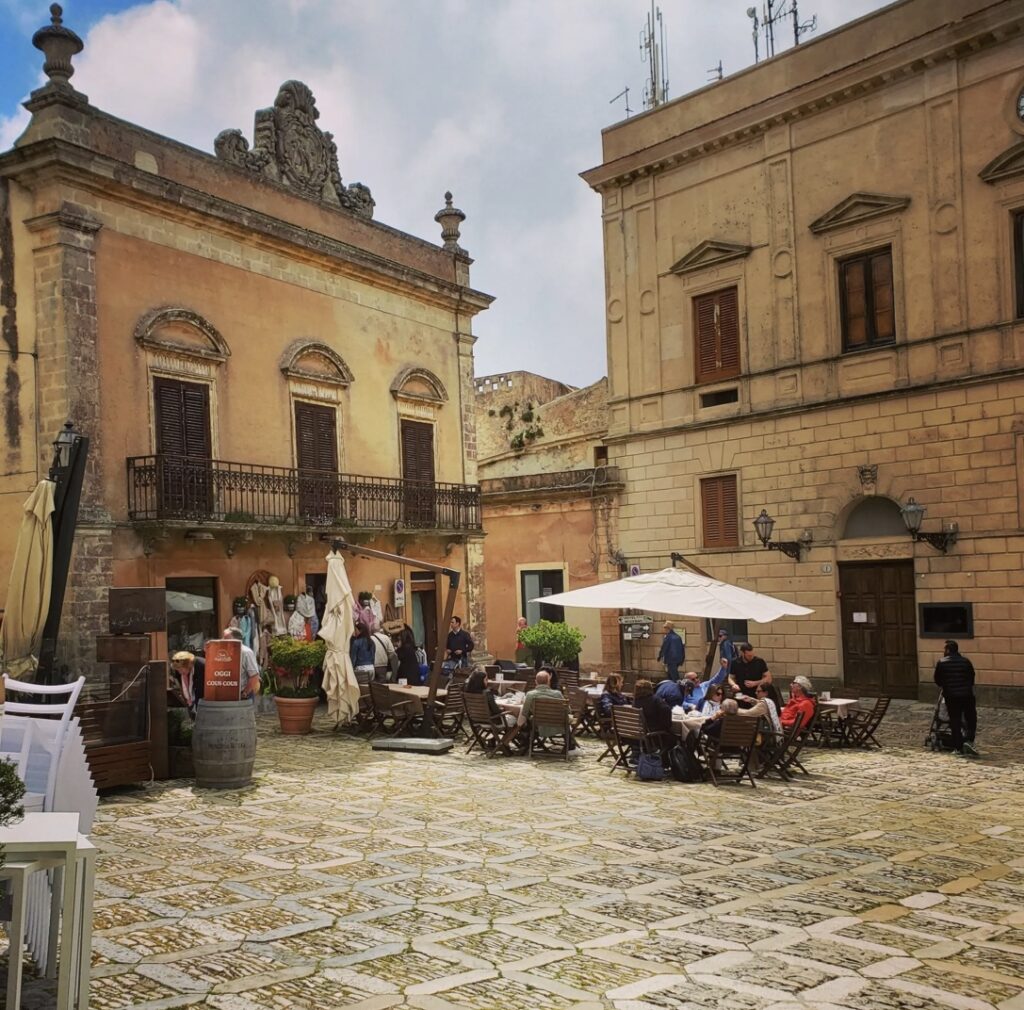
9. Church of Sant’Orsola
- Description: This church was built in the 15th century and is dedicated to Saint Ursula. It features a simple yet elegant design with a notable wooden ceiling.
- Significance: It is another example of Erice’s rich collection of historic churches.
10. Pasticceria Maria Grammatico
- Description: Although not a historical monument, this famous pastry shop is a must-visit for anyone coming to Erice. The shop is renowned for its traditional Sicilian sweets, especially those made with almonds and marzipan.
- Significance: The shop connects visitors with Erice’s culinary traditions, offering a taste of the town’s cultural heritage.
11. Museo Civico Antonio Cordici
- Description: This small museum is located in a historic building in Erice and contains archaeological finds from the area, including artifacts from the Elymian, Greek, and Roman periods.
- Significance: The museum provides insight into the ancient history of Erice and the surrounding region.
These monuments and attractions together showcase the rich history, culture, and natural beauty of Erice, making it a fascinating destination for visitors interested in exploring Sicily’s past.
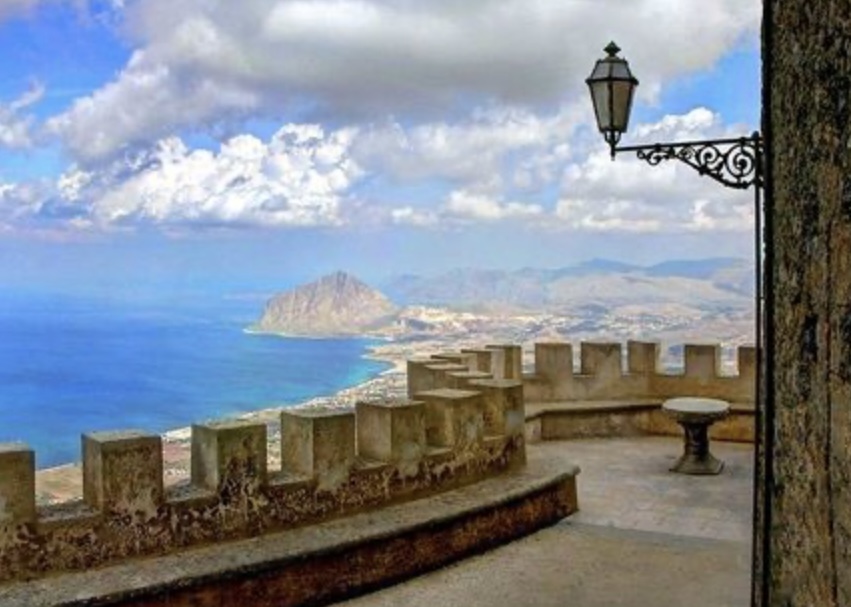
Here’s a one-day itinerary for visiting Erice that incorporates its rich history, beautiful views, and delicious local food specialties:
Morning
- 8:30 AM – Arrive in Erice
- Start your day early to make the most of your time in this beautiful town. Arrive via the funicular from Trapani for a scenic ascent to Erice.
- 9:00 AM – Visit the Chiesa Madre (Mother Church)
- Begin your exploration at the Chiesa Madre, located near the Porta Trapani. Admire the Gothic architecture and the bell tower, which offers great views of the town.
- 10:00 AM – Explore the Venus Castle (Castello di Venere)
- Walk to the nearby Venus Castle, perched on the edge of the town. Explore the ruins of this Norman fortress and enjoy panoramic views of the coast and the Egadi Islands. Don’t forget to visit the Torretta Pepoli for more stunning vistas.
- 11:30 AM – Stroll through the Balio Gardens
- After exploring the castle, take a peaceful stroll through the Balio Gardens. The gardens provide a relaxing atmosphere with incredible views, perfect for soaking in the beauty of the area.
Midday
- 12:30 PM – Lunch at a Local Trattoria
- Head to a local trattoria for lunch. A good option is Trattoria La Pentolaccia, where you can enjoy traditional Sicilian dishes. Try local specialties like couscous alla trapanese (a Sicilian twist on North African couscous with fish) or busiate alla Erice (a type of pasta typical of the region, often served with a tomato or pesto sauce).
Afternoon
- 2:00 PM – Visit the Church of San Giuliano
- After lunch, visit the Church of San Giuliano, one of the oldest in Erice. This historic church provides a glimpse into the town’s medieval past.
- 2:30 PM – Explore the Museo Civico Antonio Cordici
- Visit this small museum to see artifacts from the Elymian, Greek, and Roman periods, offering insight into the ancient history of Erice and its surroundings.
- 3:30 PM – Wander Through Erice’s Medieval Streets
- Spend some time wandering through Erice’s narrow, cobblestone streets. Explore the stone houses and enjoy the medieval atmosphere. You can also visit the Church of Sant’Orsola or the Church of San Martino if time permits.
- 4:00 PM – Afternoon Coffee and Pastries at Pasticceria Maria Grammatico
- No visit to Erice is complete without stopping at Pasticceria Maria Grammatico, one of Sicily’s most famous pastry shops. Enjoy a mid-afternoon break with a coffee and a selection of traditional Sicilian sweets, such as Genovese pastries (custard-filled delights) and cannoli.
Evening
- 5:00 PM – Sunset Walk and Viewpoint
- Take a final stroll around the town and head back to the Balio Gardens or the castle area to watch the sunset. The golden light over the town and the surrounding landscape is a perfect way to end your visit.
- 6:00 PM – Departure
- If you took the funicular, catch it back to Trapani, or if you drove, start your journey back, carrying with you memories of Erice’s charm and beauty.
This itinerary offers a balanced mix of history, culture, stunning views, and local culinary delights, ensuring a memorable day in Erice.
